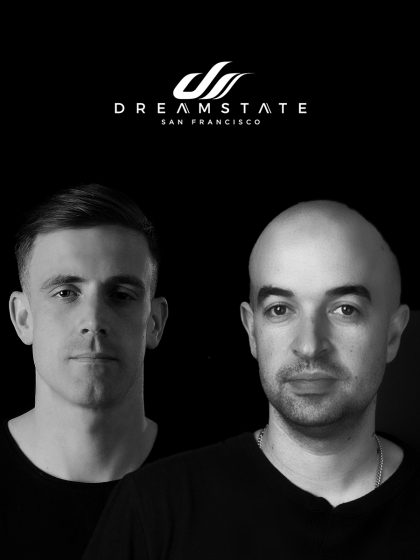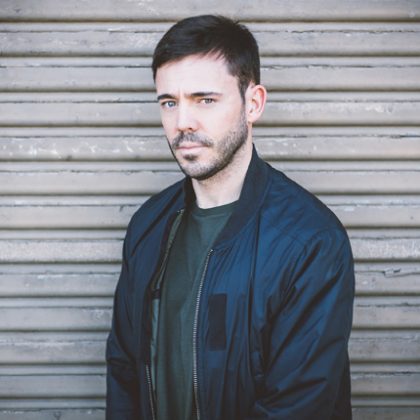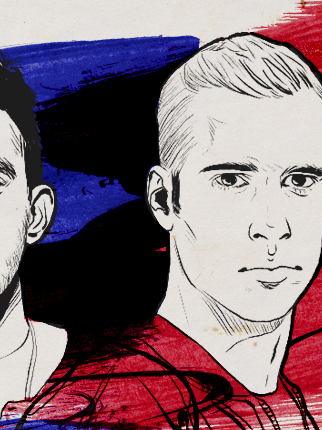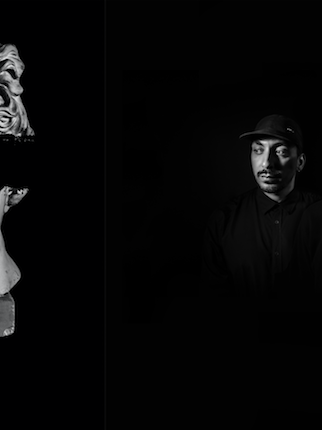Head to Head: Darren Styles vs. Fester
When it comes to DJ talent, Nocturnal Wonderland 2015 is a convergence of old and new, paying homage to the forbears of dance music while celebrating the next wave of game changers. In this three-part miniseries, we pair two voices together to paint a picture of just how far our culture has come over the past 20 years, and how much further it has to go.
Before you were DJs, you were ravers. Why is that important?
Darren Styles: It was 1992 that I went to my first rave, and I didn’t really have much knowledge about that kind of music up until then, because it was so underground. There was none of that music on radio, apart from pirate stations. I had no clue what to expect; it was just my friends saying that we had to go to this club. When I arrived, I was so out of place, it was ridiculous. I had my school trousers on, a white shirt; and I get down there, and they’ve got whistles and horns and white gloves and bright-colored T-shirts and psychedelic stuff going. As soon as I walked into the main room and heard the music and felt the bass, that was it. I was 16 at the time, and I was there every Saturday after that. When people say they live for the weekend, that is literally what I did back then. I’d go down to the record shop and buy the music on vinyl, even though I didn’t have decks or any ambition to be a DJ.

Fester: It’s a good way to see what people feel. You get that sense of energy and connection with everybody. You can’t just come in and feel nothing.
 Fester, do you remember your first rave? What is in SoCal?
Fester, do you remember your first rave? What is in SoCal?
Fester: Yeah, it was. I got introduced to the rave scene by my coworker, who was like, “Do you want to go to a party?” We called them “parties” back then; they weren’t massives. Like Darren, I didn’t know what to expect. I thought everyone was going to be dressed in black, you know, the goth industrial scene. That’s what I pictured. I was a little freaked out and scared, but once we got in, I just heard this loud music—the loudest music I had ever heard anywhere. Just one strobe light. I couldn’t see the DJ. I didn’t know what was going on, but the vibe was incredible. There were only like 10 people there. This was back in 1990. Like Darren said, every Saturday, I was there.
Darren Styles: Back then it was such a different thing, because even though the DJs were popular, it was nothing like it is now. It was only about the music. We didn’t go down to the club because a certain DJ was playing. We went down because we knew it was going to be a great night. Whether it was Fabio or Grooverider or anyone else, they’d just be behind the decks, head down, banging out the tunes. It’s changed so much.
What’s stayed the same?
Daren Styles: The crowd reaction has stayed the same, and that’s something I’m happy about.
Fester: I’ll second that. What’s stayed the same is the vibe—people smiling and dancing and having a good time.
What’s the first mixtape that stuck with you?
Darren Styles: I can tell you the exact tape. That club I was talking about before was called Oscar’s, and there was a guy who used to DJ there called Devious Dee, and someone hooked me up with his tape. That was the tape that got me into rave music and had all sorts of rave anthems on it at the time, from the Prodigy and SL2 to Sonz of a Loop Da Loop Era.
Fester: It’s a toss-up, but I really remember this tape from Mickey Finn called Live at AWOL. I think it was a New Year’s Eve party, and it had all the anthems from the UK on it. That changed my life right there.
Whether it was happy hardcore or techno, hard styles provided the backbone for early dance music. It wasn’t about aggression; it was just high-energy.
Darren Styles: I started making dance music in 1993, and when I first started off, it was all 140 BPM. That was just early rave music. When rave music became happy hardcore, and jungle and drum & bass became what they were—because at first, we were all one—the happy side of things is where I went, and DJs like Kenny Ken went to jungle. By then, we had gone up to 150-160 BPM, and then gradually, over the years, it moved up to where it is now, around 170, which is where I’m at and have been for over 15 years.
Fester: It was all techno for me. High-energy, you name it—I just fell in love with it. It’s really gone full-cycle, and I think it’s coming back, but I’m glad Darren stayed true to his heart and stuck with it.
Follow Darren Styles on Facebook | Twitter
Follow DJ Fester on Facebook





